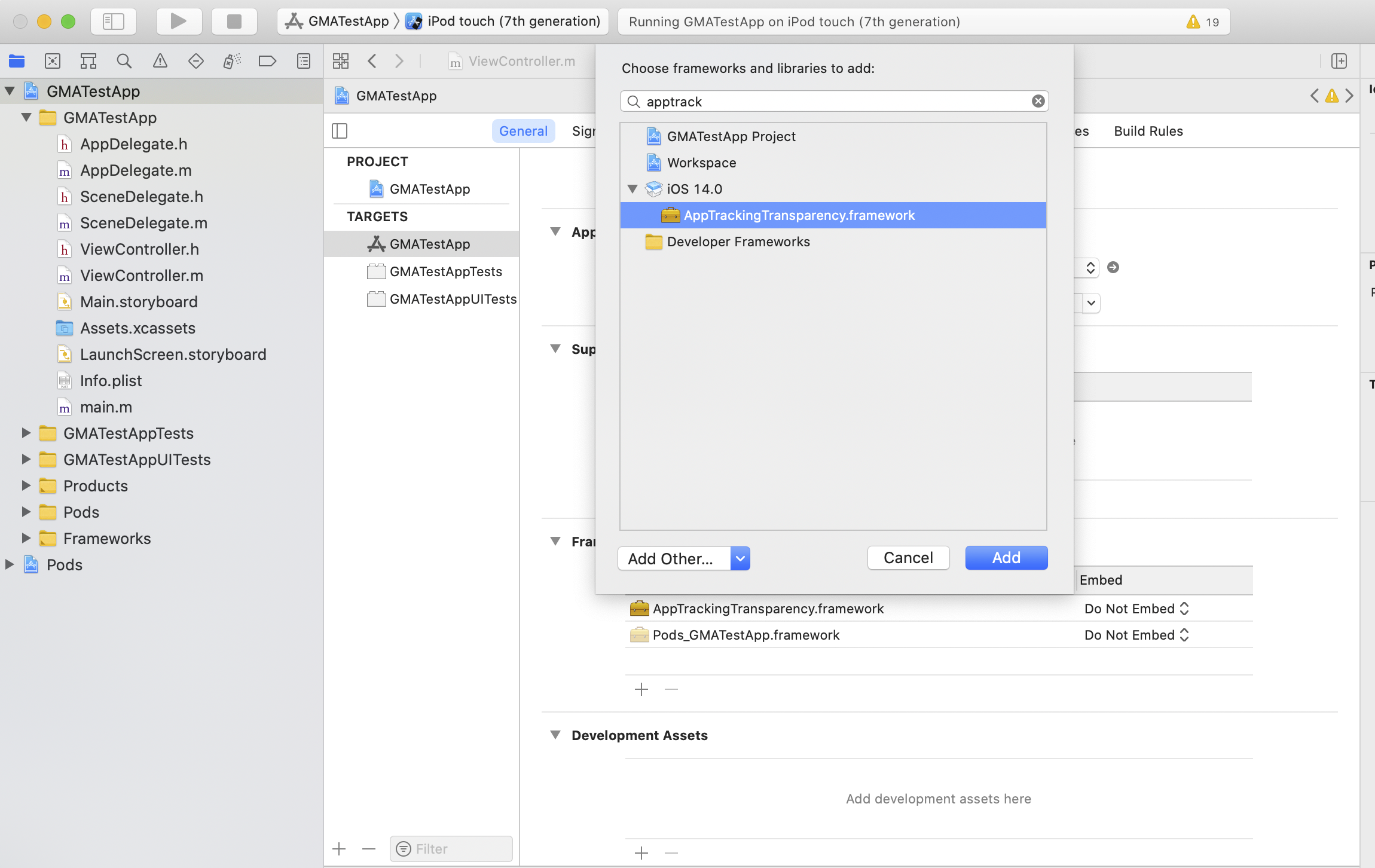広告主向け識別子(IDFA)のサポート
コレクションでコンテンツを整理
必要に応じて、コンテンツの保存と分類を行います。
User Messaging Platform(UMP)SDK を使用すると、App Tracking Transparency(ATT)の同意を求める前に、ユーザーに IDFA メッセージを表示できます。IDFA メッセージには、アプリで識別子がどのように使用されるかが示されます。
このガイドでは、UMP SDK を使用して IDFA メッセージを表示する方法について説明します。
前提条件
始める前に、以下が完了していることを確認してください。
Info.plist を更新する
カスタム アラート メッセージを表示する手順は次のとおりです。
Info.plist ファイルを開きます。- 使用方法を説明するカスタム メッセージを含む
NSUserTrackingUsageDescription キーを追加します。
<key>NSUserTrackingUsageDescription</key>
<string>This identifier will be used to deliver personalized ads to you.</string>
この使用方法の説明文は、同意フォームを提示すると IDFA ATT アラートの中で次のように表示されます。

次に、AppTrackingTransparency フレームワークをリンクします。

アプリでは、その後 IDFA メッセージが表示されてから、ATT アラートが表示されます。
テスト
requestTrackingAuthorization は 1 回限りのリクエストであるため、ATT アラートはテスト中に 1 回だけ表示されます。UMP SDK には、承認ステータスが ATTrackingManagerAuthorizationStatusNotDetermined の場合にのみ読み込み可能なフォームがあります。
アラートをもう一度表示するには、テスト用デバイスでアプリをアンインストールしてから再インストールする必要があります。
IDFA の有無にかかわらず広告をリクエストする
ユーザーが ATT を拒否した場合は、広告フォーマットの API を使用して広告のリクエストを続行します。Google Mobile Ads SDK は、広告リクエストで IDFA を送信しません。詳しくは、広告フォーマットを選択するをご覧ください。
特に記載のない限り、このページのコンテンツはクリエイティブ・コモンズの表示 4.0 ライセンスにより使用許諾されます。コードサンプルは Apache 2.0 ライセンスにより使用許諾されます。詳しくは、Google Developers サイトのポリシーをご覧ください。Java は Oracle および関連会社の登録商標です。
最終更新日 2025-12-23 UTC。
[[["わかりやすい","easyToUnderstand","thumb-up"],["問題の解決に役立った","solvedMyProblem","thumb-up"],["その他","otherUp","thumb-up"]],[["必要な情報がない","missingTheInformationINeed","thumb-down"],["複雑すぎる / 手順が多すぎる","tooComplicatedTooManySteps","thumb-down"],["最新ではない","outOfDate","thumb-down"],["翻訳に関する問題","translationIssue","thumb-down"],["サンプル / コードに問題がある","samplesCodeIssue","thumb-down"],["その他","otherDown","thumb-down"]],["最終更新日 2025-12-23 UTC。"],[],["To support the IDFA message with the UMP SDK, complete the \"Get started\" guide and create an IDFA message. Update the `Info.plist` by adding the `NSUserTrackingUsageDescription` key with a custom message. Link the `AppTrackingTransparency` framework. During testing, note that the IDFA ATT dialog only appears once unless the app is reinstalled, due to `requestTrackingAuthorization` being a one-time request and the status needs to be `ATTrackingManagerAuthorizationStatusNotDetermined`.\n"]]


